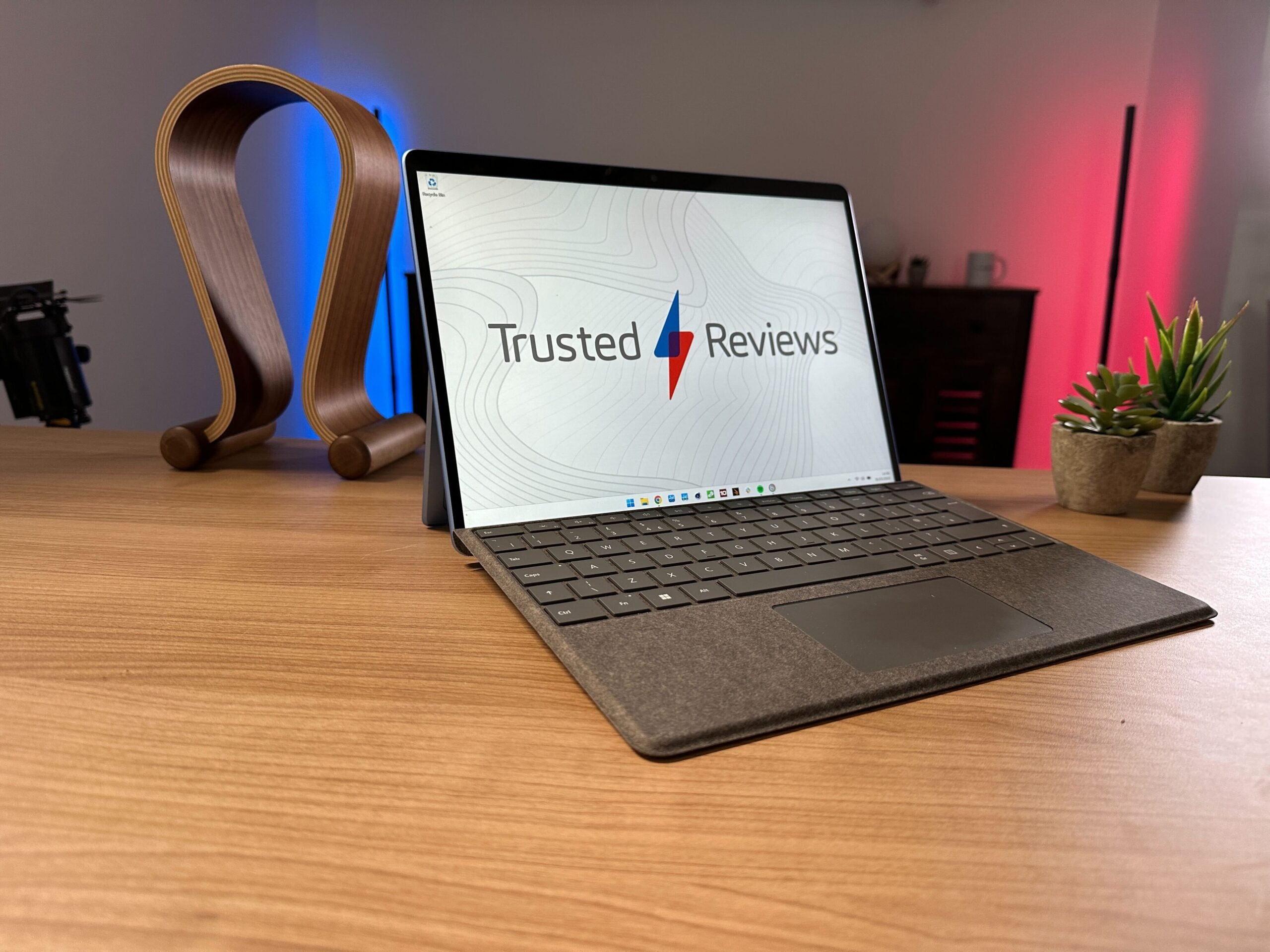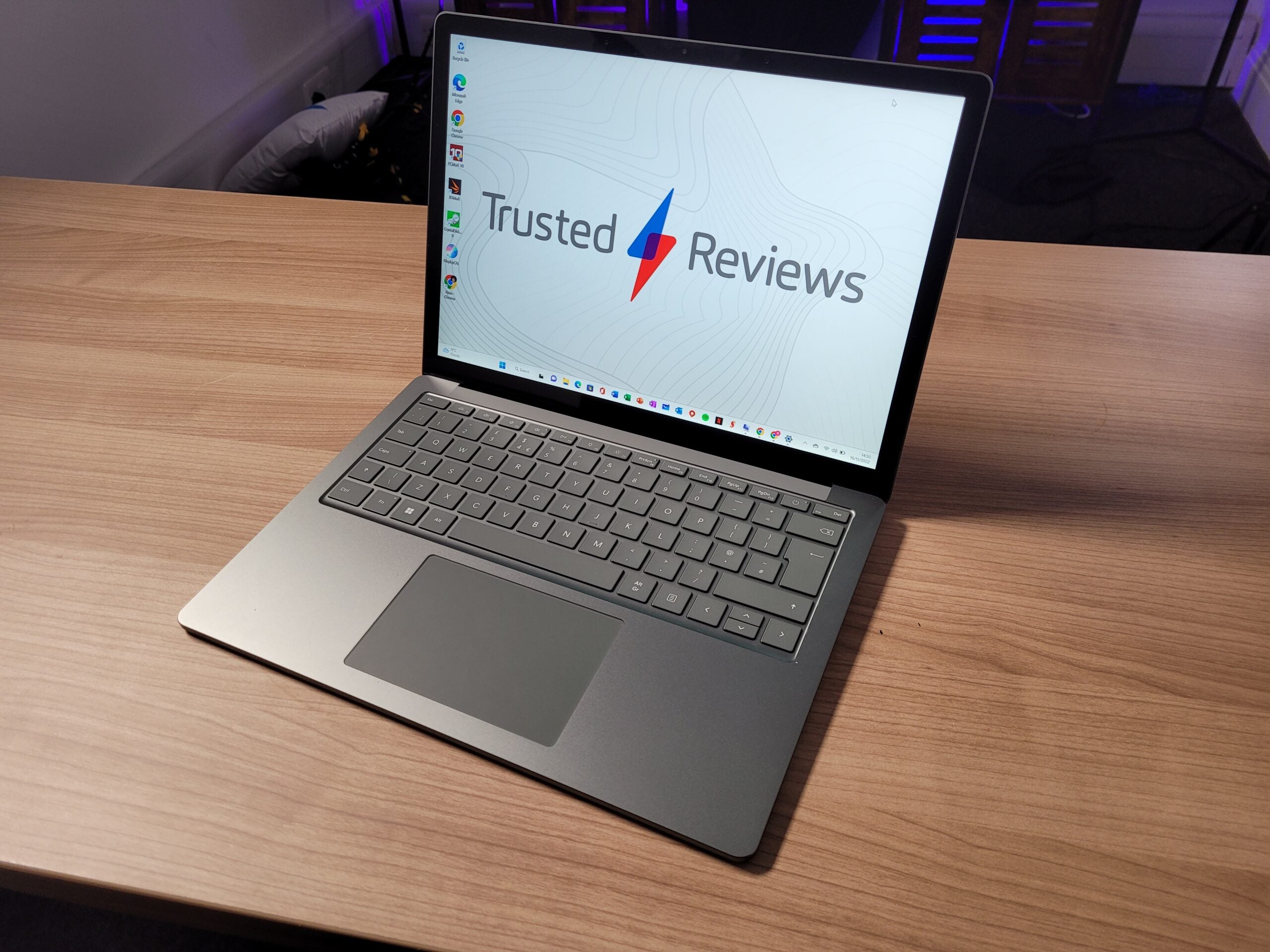Microsoft makes a great number of laptops, coming in all shapes and sizes. Two of the post popular ranges include the Surface Pro and Surface Laptop, but which is right for you?
In this comparison guide, we’ll be highlighting the key differences between the Surface Pro and Surface Laptop ranges rather than focusing on individual models.
This should help you understand what to expect from each product range, and help determine which is the best option for your needs. So without further ado, here are the key differences between the Microsoft Surface Pro and Surface laptop series.
Price
There isn’t a big difference in price between the two Microsoft Surface ranges. They’re both targeting a similar market: those who need a speedy productivity machine for day-to-day workloads.
The Microsoft Surface Pro 9 has a starting price of £1099, shipping with an Intel Core i5 processor, 8GB of RAM and a 256GB SSD. It’s worth noting that you don’t get the Type Cover at this price, which is required to turn the tablet into a laptop.
The 13-inch Microsoft Surface Laptop 5 is slightly more affordable, with the base model coming in at £999 with an Intel Core i5 processor, 8GB of RAM and a 256GB SSD. That said, those who fancy the larger 15-inch model will need to spend at least £1299.
Design
The key difference between these Surface devices can be found with the design. The Surface Pro is actually a tablet, as it doesn’t come with a keyboard attached, and instead relies on its touchscreen for navigation.


However, unlike most tablets, the Surface Pro runs on Windows 11 and is powered by an Intel Core processor. If you attach the Type Cover, which is a separately available accessory, then you can use it like any other standard clamshell laptop.
Microsoft has played around with the design over the years, shrinking the bezel and weight of the Surface Pro X model for instance, but the core hybrid design has remained the same since its inception.
The Microsoft Surface Laptop range is a lot more straightforward, as it sports a clamshell design like a classic laptop. The downside to this is that you can’t use the device like a tablet, as it’s physically connected to a full-size keyboard. Microsoft hasn’t made many changes to the design over the years, although the available colours have varied.
Screen
There are minor differences when it comes to the screen of both Surface ranges. The Surface Pro is only available in a 13-inch size, but flaunts a 120Hz refresh rate, 2880×1920 resolution and 1200:1 contrast. Rumours indicate the upcoming Surface Pro 10 could feature an OLED screen, but that hasn’t been confirmed just yet.
The 13-inch Surface Laptop only has a 60Hz refresh rate, while the resolution is a little lower at 2256×1504. Contrast is marginally better, but not by much with a figure of 1300:1. All in all, there isn’t much of a difference, but the higher refresh rate on the Surface Pro should translate to smoother scrolling.
That said, it is possible to upgrade to a larger 15-inch screen when purchasing a Surface Laptop. The pixel density remains the same as the 13-inch model, as does the refresh rate and contrast, but it’s at least a handy option for those who prefer big screens.
Performance
Microsoft offers the same configuration options for both the Surface Pro and Surface Laptop. You can configure both ranges with up to 32GB of RAM, and up to 1TB of storage.
We reviewed both the Surface Pro 9 and Surface Laptop 5, with our review units both packing an Intel Core i7-1255U processor. We conducted benchmarks on the two devices, which established that they have an almost identical performance – no surprise considering they’re using the same chip.
With this in mind, you won’t need to worry about the performance when choosing the Surface Pro and Surface Laptop ranges. However, this is an exception, as the Surface Pro is also available with a Qualcomm processor. This is unique to the Surface Pro range, and allowed Microsoft to create a slimmer design while also making 5G connectivity possible, although this chip isn’t quite as powerful as the Intel variant.
Battery life
The Surface Pro suffers a little in the battery department. As all of the components are stuffed behind the screen rather than underneath the keyboard, Microsoft has been forced to compromise on the battery capacity.
In our benchmark tests, the Surface Pro 9 lasted just short of 10 hours when undertaking day-to-day workloads. This should still see you through the working day, but it’s not quite as long as the battery of the Surface Laptop.
According to our benchmark tests, the Surface Laptop 5 is able to last just shy of 13 hours for productivity workloads. That’s a 3-hour improvement over its Surface Pro sibling, despite having the exact same processor.
Verdict
The important aspect to consider regarding the Surface Laptop and Surface Pro is that they have very different designs. The Surface Laptop is a classic clamshell laptop, while the Surface Pro is a tablet that can be turned into a makeshift laptop when combined with Microsoft’s Type Cover.
Otherwise, there aren’t many other major differences. The Surface Pro range now has a speedier 120Hz refresh rate and is rumoured to be getting an OLED screen in the future, while the Surface Laptop range has a longer battery life and a physical full-size keyboard which feels nicer to type on. But both machines offer the same configuration options, so there’s little need to factor the performance into your decision
So in the end it really just comes down to one thing: would you prefer a standard laptop design, or a tablet with the ability to double up as a laptop? Those who answer the former should go with the Surface Pro, while the rest should pick the Surface Laptop instead.




